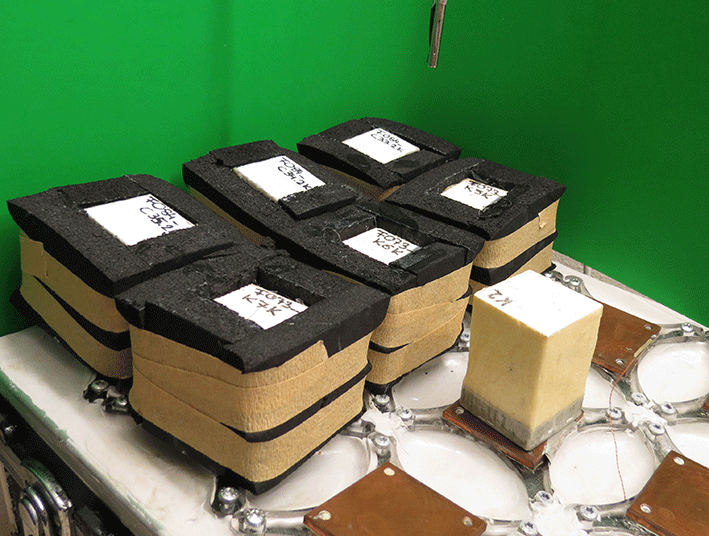A new test method
In many cases, the only way to improve a building's thermal efficiency is to install interior insulation. The standard method used to prevent condensation forming behind the insulation is to fit a vapor retarder or moisture barrier to the insulation on the side facing the building's interior. The problem with this is that it the insulation cannot dry out very well in dry weather.
This dilemma spawned the trend of using vapor-permeable systems with capillary-active insulation - in other words, materials whose structure enables them to take up and redistribute accumulating moisture. In this way, these materials can help achieve moisture balance. The data typically used to monitor moisture behavior and assess the performance of such materials are obtained in tests where materials are exposed to the effects of wind and weather. Unfortunately, these data are often not accurate enough.
In response to this situation, researchers at the Fraunhofer Institute for Building Physics IBP in Holzkirchen near Munich have developed a new laboratory test, which they dubbed “Kapi-Test” (see Figure 2). By determining precise values for capillary reverse transport in interior insulation, the Kapi test enables the researchers to gain reliable and accurate information about how insulation can regulate its own environment.
To do this, the researchers recreate the conditions in which the insulation is installed. Under non-isothermal conditions, they measure capillary activity in interior insulation without exposing it to water in a liquid state, causing vapor and liquid to move in opposite directions.
For the test, the researchers seal the sides and back of a prism-shaped test sample so that only the front is in contact with the atmosphere inside a climate chamber. The rear face of the sample is mounted to a cooling element, which lowers its temperature below the dew point of the indoor air. The diffusion set in motion by the interior climate leads to an increase in relative humidity towards the back of the sample, which in turn causes more and more vapor to move in the other direction, towards the warm - and at this point drier - front area of the sample. Depending on the conditions and material properties, if the opposing capillary action is sufficient, the movement of moisture in both directions creates a state of equilibrium.
Moisture absorption and distribution are determined by standard gravimetric analysis and magnetic resonance spectroscopy. Liquid transport values are subsequently obtained via hygrothermal simulations.
Diagrams 1, 2 and 3 show the measurement results of a Kapi test performed on calcium silicate - a hydrophilic, mineral-based material with extremely fine pores. These results are compared with the results of the numerical simulation featuring vapor transport coefficients based on the new method as well as on conventional measurement methods.
Especially at the beginning of the test, a marked increase in weight can be observed (Figure 1). The results for moisture distribution (Figure 2) show that moisture levels increase first on the cooled rear side of the sample. As the test progresses, less and less water build-up occurs as moisture is dispersed over a larger area of the sample. After about three to four weeks, a state of equilibrium is established with a total water content of approx. 49 kg/m³.
In the numerical simulation, the values obtained from the Kapi test (blue curve) were largely the same as the measurement results in terms of relative moisture - both in relation to the increase in absolute water levels and to the moisture distribution (Figure 3). In contrast, simulations based on values provided by wind-and-weather tests (water absorption test, redistribution tests) show significantly lower moisture levels and that a state of equilibrium is reached more quickly.
With the aid of the measurement results from new test method, more accurate values can be obtained to calculate capillary reverse transport. Hygrothermal simulations based on these values also allow interior insulation systems to be tested, taking into account measured, changing climatic conditions. Since this realistically predicts the behavior and functionality of these systems, we are now much better equipped to assess how reliably they will function in practice and also how they can be improved upon.
